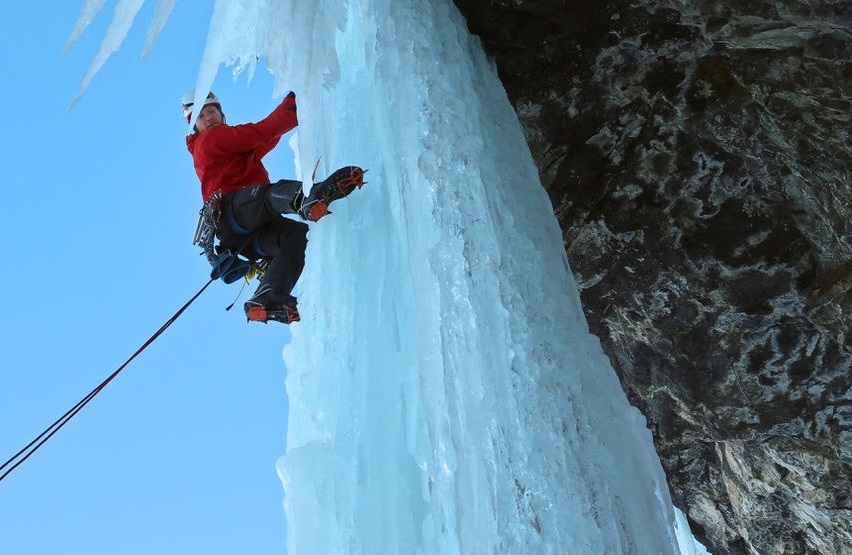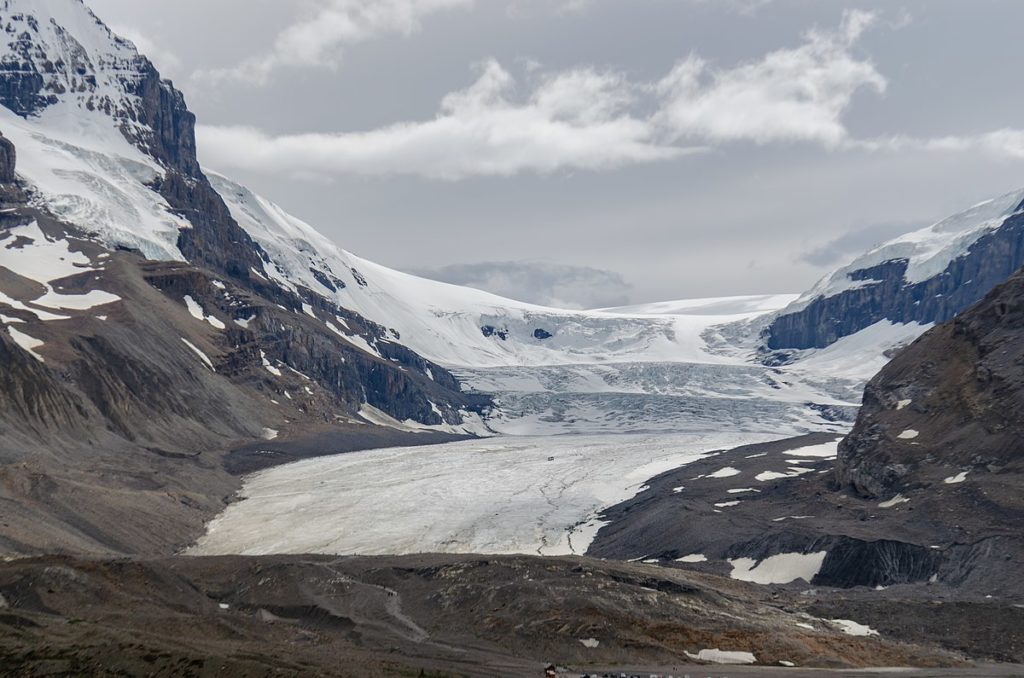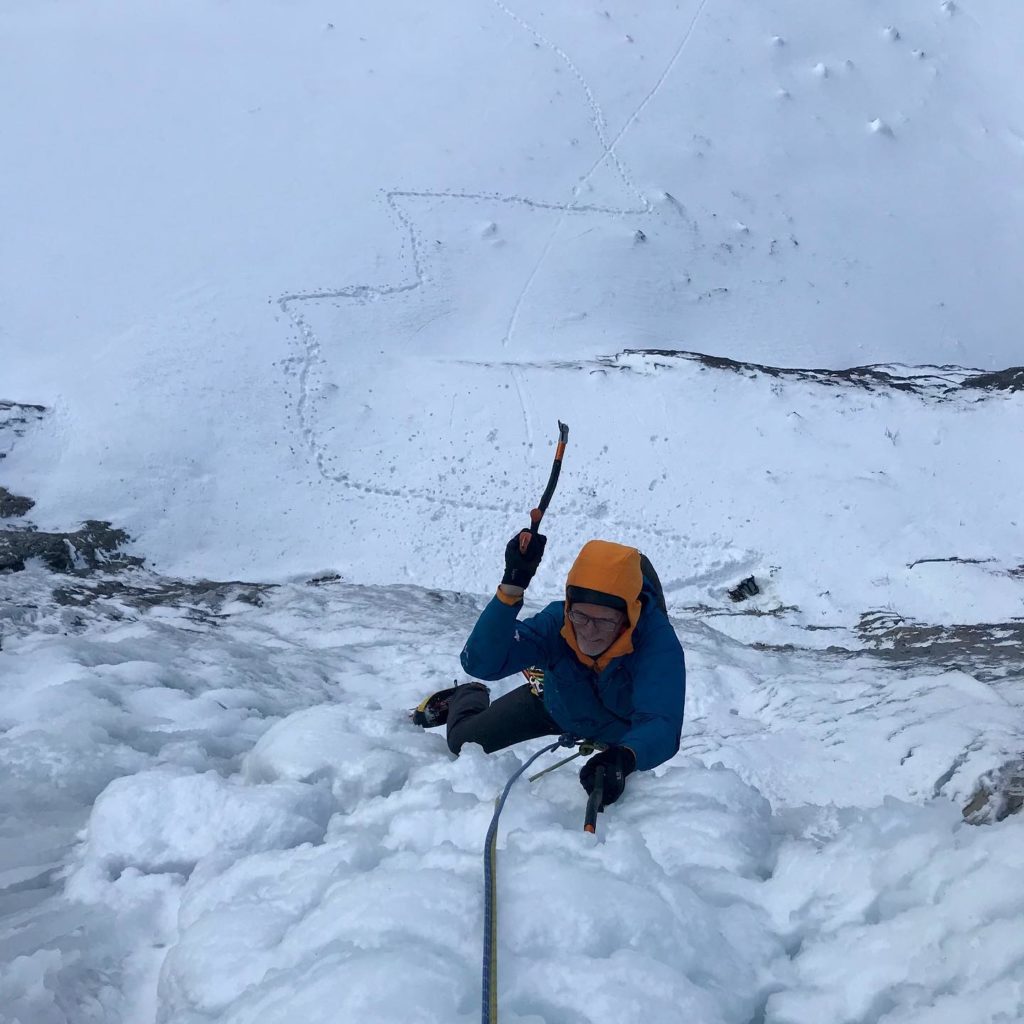Words with Guide Dylan Cunningham on Ice Climbing Glaciers and Technique
On Oct. 9 and 10, he'll be running an ice climbing course on the Atahabasa Glacier.
 Photo by: Gery Unterasinger of Dylan Cunningham on Killer Pillar WI6
Photo by: Gery Unterasinger of Dylan Cunningham on Killer Pillar WI6
Dylan Cunningham is a Canadian Rockies-based ski and climbing guide with a number of impressive ascents and descents to his name.
On Oct. 9 and 10, he’s offering Early Season Icebreaker, an ice climbing course directed at climbers looking to improve their skills and shift from rock to ice season. It will take place on the Athabasca Glacier and will focus on climbing moulins.
Of his many Rockies adventures, he became the third skier to descend the mighty North Face of Mount Robson in 2017, decades after it was first skied by Troy Jungen and Ptor Spricenieks. In 2020, with John Price and Kevin Rohn, he made the first ascent of Red Beard, a 420-metre M5 WI5, in Banff National Park.
We touched base with Cunningham to hear about what ice climbing glaciers is like, and his upcoming course.
What are glacier moulins? Moulins, also called millwells, are holes formed in a glacier’s surface by meltwater. I imagine it starts where old crevasses have been pressed shut, but ‘cracks’ still remain. Once water starts working it’s way in, the process of building some pretty incredible architecture is set in motion. Ultimately, the moulins are just the start of a remarkable network of glacial plumbing that channels water down through larger glaciers.
Is there a difference between glacial ice and waterfall ice? Definitely. The glacial ice you’ll find yourself climbing in moulins has been formed, in simple terms, from compressed snow and percolating meltwater. It then gets shaped and moulded as flowing water melts it away. All this happens in a fairly sheltered environment. The result is completely homogenous and relatively unyielding ice, impeccably smooth surfaces, and shapes reminiscent of desert canyons. Add to this that it’s not just possible but common to have continuously overhung features, and you can find yourself getting a serious workout.
By contrast, the waterfall ice most of us are more familiar with forms as flowing water freezes on its way down cliffs. While this happens the wind may be blowing, snow can be falling, the mercury level continually yo-yo’s, and the sun lays a beat down where it can. This delivers, for better or for worse, a much more varied medium in all its facets.
Overall I think both forms of ice climbing are spectacularly interesting and challenging. Still, a final distinction is worth making: between June and mid-October, moulin climbing is in much better form than waterfall ice.
How safe is it to climb? Good question! Based on the time I have spent playing around in moulins over the last five years, I think the risk is similar to climbing at an ice crag. The hitch is that you have to be aware of the unique hazards you’re exposed to in that environment, then manage them appropriately. That’s where experience comes in. A few key considerations I make are:
Stay dry! Water flow can vary from enough to soak you to the bone or sweep you away, down to just bits of dripping water or even bone dry. It changes as meltwater channels shift and depending on how much the glacier is melting. I only go into moulins where or when I can have an adventure without getting wet.
Address the stress! The ice you’re climbing in moulins can be under tension that builds up as the glacier flows. When it releases, the shooting cracks and sounds can be unnerving. While I haven’t seen any evidence of major ice failures in moulins I still diligently investigate and test features as I go down into them.
What goes down must come up! Recognize how complicated a rescue might be if you get hurt below the surface, and act accordingly.
Is this for new climbers, experienced climbers, or everyone? The course I’m running is geared towards experienced ice climbers. I’m tailoring it towards folks that are comfortable seconding or leading WI4 but want to take it to the next level. By doing so, I can really maximize what everyone gets out of working with me. If that isn’t where you’re at, but you’re still psyched to strap crampons on and swing tools, don’t hesitate to get in touch. I love teaching, and this isn’t the only course I’ll be running.

What can climbers expect to learn? Everyone should come expecting to learn just how wildly pumped they can get and still hang on, hahaha! But actually, you should prepare to impress yourself with how efficient you can become by honing your technique. The mental and technical coaching to achieve that will be the main course, but I’ve got a full menu so no one goes home hungry. A review of basic ice movement will be an appetizer, we’ll sip on the newest brew of gear recommendations and applications as we go along, and then dessert will be a pickle and some info on how to get out of it. An added treat is that Jim Elzinga will be joining us for the weekend. As one of the most experienced climbers in the Rockies, he will no doubt be able to pass on a few pearls of wisdom.
Without giving too much away, what’s one way a climber can prepare for ice season? Number one… that’s tough. I can think of so many important ways to get prepped. I guess a good place to start though is by making sure your axes and crampons are sharp and well-adjusted. That includes checking the toe welt on your boots isn’t about to blow if you’re using a toe bale. It’s those tools that are keeping you attached while you’re climbing. Ice is a hazardous enough medium, don’t let equipment malfunction be your downfall.



